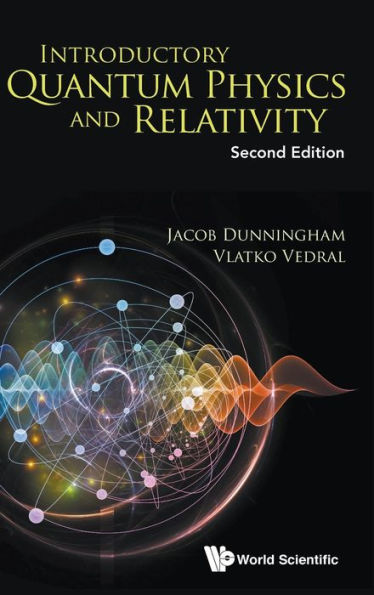Introductory Quantum Physics And Relativity (Second Edition)
'The authors have done an exceptional job. It's probably more accurate to describe this text as an introduction to both non-relativistic and relativistic quantum mechanics … This book was a lot of fun to read and digest. I definitely recommend it for instructors, but also for students who have already been exposed to quantum mechanics.'
Contemporary PhysicsThis book is a revised and updated version of Introductory Quantum Physics and Relativity. Based on lectures given as part of the undergraduate degree programme at the University of Leeds, it has been extended in line with recent developments in the field. The book contains all the material required for quantum physics and relativity in the first three years of a traditional physics degree, in addition to more interesting and up-to-date extensions and applications which include quantum field theory, entanglement, and quantum information science.The second edition is unique as an undergraduate textbook as it combines quantum physics and relativity at an introductory level. It expounds the foundations of these two subjects in detail, but also illustrates how they can be combined. It discusses recent applications, but also exposes undergraduates to cutting-edge research topics, such as laser cooling, Bose-Einstein condensation, tunneling microscopes, lasers, nonlocality, and quantum teleportation.
1123821328
Contemporary PhysicsThis book is a revised and updated version of Introductory Quantum Physics and Relativity. Based on lectures given as part of the undergraduate degree programme at the University of Leeds, it has been extended in line with recent developments in the field. The book contains all the material required for quantum physics and relativity in the first three years of a traditional physics degree, in addition to more interesting and up-to-date extensions and applications which include quantum field theory, entanglement, and quantum information science.The second edition is unique as an undergraduate textbook as it combines quantum physics and relativity at an introductory level. It expounds the foundations of these two subjects in detail, but also illustrates how they can be combined. It discusses recent applications, but also exposes undergraduates to cutting-edge research topics, such as laser cooling, Bose-Einstein condensation, tunneling microscopes, lasers, nonlocality, and quantum teleportation.
Introductory Quantum Physics And Relativity (Second Edition)
'The authors have done an exceptional job. It's probably more accurate to describe this text as an introduction to both non-relativistic and relativistic quantum mechanics … This book was a lot of fun to read and digest. I definitely recommend it for instructors, but also for students who have already been exposed to quantum mechanics.'
Contemporary PhysicsThis book is a revised and updated version of Introductory Quantum Physics and Relativity. Based on lectures given as part of the undergraduate degree programme at the University of Leeds, it has been extended in line with recent developments in the field. The book contains all the material required for quantum physics and relativity in the first three years of a traditional physics degree, in addition to more interesting and up-to-date extensions and applications which include quantum field theory, entanglement, and quantum information science.The second edition is unique as an undergraduate textbook as it combines quantum physics and relativity at an introductory level. It expounds the foundations of these two subjects in detail, but also illustrates how they can be combined. It discusses recent applications, but also exposes undergraduates to cutting-edge research topics, such as laser cooling, Bose-Einstein condensation, tunneling microscopes, lasers, nonlocality, and quantum teleportation.
Contemporary PhysicsThis book is a revised and updated version of Introductory Quantum Physics and Relativity. Based on lectures given as part of the undergraduate degree programme at the University of Leeds, it has been extended in line with recent developments in the field. The book contains all the material required for quantum physics and relativity in the first three years of a traditional physics degree, in addition to more interesting and up-to-date extensions and applications which include quantum field theory, entanglement, and quantum information science.The second edition is unique as an undergraduate textbook as it combines quantum physics and relativity at an introductory level. It expounds the foundations of these two subjects in detail, but also illustrates how they can be combined. It discusses recent applications, but also exposes undergraduates to cutting-edge research topics, such as laser cooling, Bose-Einstein condensation, tunneling microscopes, lasers, nonlocality, and quantum teleportation.
98.0
Out Of Stock
5
1

Introductory Quantum Physics And Relativity (Second Edition)
308
Introductory Quantum Physics And Relativity (Second Edition)
308Related collections and offers
98.0
Out Of Stock

Product Details
| ISBN-13: | 9789813228641 |
|---|---|
| Publisher: | World Scientific Publishing Company, Incorporated |
| Publication date: | 05/30/2018 |
| Pages: | 308 |
| Product dimensions: | 6.00(w) x 9.00(h) x 0.75(d) |
From the B&N Reads Blog
